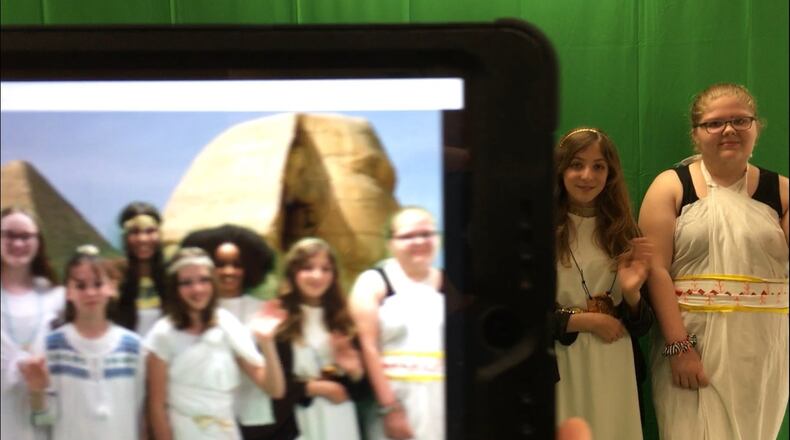Toss in some creative costumes, such as sixth-graders at Freedom Elementary did last week during Egypt Day, and one has a classroom lesson that engages students visually as well as intellectually, officials said.
“We were standing with alligators and pyramids,” said Freedom Elementary sixth-grader Arianna Strunk as she took a break from being an Egyptian princess, complete with a royal gold head dress and flowing gown from the ancient Middle Eastern era.
“It was a lot of fun, I really enjoyed having interaction (with projected backdrop) rather than just sitting in the classroom.”
That’s a big part of the appeal for teachers such Freedom sixth-grade science instructor Bethany Beck.
A two-decade veteran of teaching, Beck said the movie-like, computer generated imagery (CGI) is revolutionary in engaging the increasingly visually sophisticated youngsters of today.
“It gives the students the opportunity to virtually travel to other places and to see themselves in areas they may have not been to by this age,” she said.
“They can see themselves in front of animations,” she said.
The potential as a classroom instructional tool “is still to be discovered,” said Beck.
“I think we can do some virtual trips in the future … I foresee us possibly putting kids in scientific environments and possibly even career environments where they couldn’t necessarily take a field trip or go on their own,” she said.
Lauren Boettcher, a spokeswoman for Lakota Schools, said more schools in the 16,500-student school system are using green screens.
“They are an integral part of the new Innovation Hubs in our secondary buildings and something that most of our elementary schools are adopting as they move to a similar model with their media centers,” said Boettcher.
“It all comes down to creating experiences that are both meaningful and engaging and we’re seeing more and more examples districtwide of how green screens accomplish both those things,” she said.
About the Author
